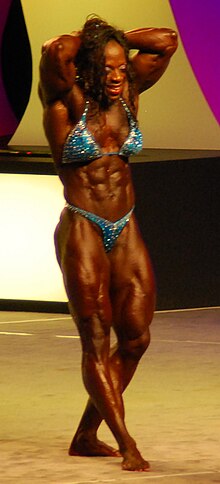Pulse of Information
Your source for the latest insights and updates.
Weights, Wits, and Protein Shakes
Unleash your fit potential with expert tips on weights, wits, and delicious protein shakes. Transform your routine today!
The Ultimate Guide to Balancing Weights and Protein for Optimal Fitness
Achieving optimal fitness requires a careful balance between weights and protein. Weight training helps to build muscle mass, while protein is essential for muscle repair and growth. Individuals looking to maximize their fitness gains should consider incorporating a structured weightlifting routine alongside a protein-rich diet. A well-rounded approach might include strength training exercises such as squats and deadlifts, performed at least 3-4 times a week, complemented by protein sources like lean meats, dairy, or plant-based options. Understanding how to balance these elements can promote muscle hypertrophy and enhance overall physical performance.
To streamline your fitness regimen, it’s crucial to establish a clear protein intake guideline based on your weight training routine. A common recommendation is to consume about 0.8 to 1 gram of protein per pound of body weight daily, especially on training days. Additionally, timing your protein intake can make a significant difference; aim to consume protein within 30 minutes after your weightlifting sessions to optimize recovery. Here’s a simple plan to consider:
- Pre-workout: Have a light snack with protein, like Greek yogurt.
- Post-workout: Enjoy a protein shake or a meal containing both protein and carbohydrates.

Top 5 Protein Shake Recipes to Fuel Your Workouts
For fitness enthusiasts seeking to enhance their performance, protein shakes have become an essential component of their diet. In this article, we present the Top 5 Protein Shake Recipes that not only taste great but also provide the necessary nutrients to fuel your workouts. These recipes are easy to prepare and can be customized to suit your taste preferences while ensuring you get the protein your body needs.
- Chocolate Banana Blast: Blend 1 scoop of chocolate protein powder, 1 ripe banana, 1 cup of almond milk, and a tablespoon of peanut butter. This shake is perfect for post-workout recovery with a delightful flavor.
- Berry Protein Power: Combine 1 scoop of vanilla protein powder with 1 cup of mixed berries, 1 cup of Greek yogurt, and a splash of coconut water for added electrolytes.
- Green Machine Smoothie: Start with 1 scoop of your favorite plant-based protein, add a handful of spinach, half an avocado, and 1 cup of unsweetened almond milk for a nutrient-dense drink.
- Coffee Protein Fix: Mix 1 scoop of coffee-flavored protein powder with 1 cup of cold brew coffee, half a banana, and a spoonful of almond butter to jumpstart your day.
- Peachy Keen Delight: Blend 1 scoop of vanilla protein powder with 1 ripe peach, 1 cup of oat milk, and a sprinkle of cinnamon for a refreshing shake that’s perfect for summer!
How to Use Your Wits in the Gym: Strategies for Effective Weight Training
Using your wits in the gym is crucial for maximizing the effectiveness of your weight training routine. Planning your workouts ahead of time can make a significant difference in your performance. Start by setting clear goals for what you want to achieve, whether it's building strength, increasing endurance, or improving your overall fitness. Next, create a balanced workout schedule that includes a variety of exercises targeting different muscle groups. Consider incorporating compound movements such as squats and deadlifts, which engage multiple muscles and promote efficient lifting techniques. Lastly, always take the time to warm up and cool down to prevent injury and enhance recovery.
Another effective strategy is to listen to your body during workouts. This means paying attention to how your muscles feel and adjusting your weights accordingly. It’s important to differentiate between mere discomfort and actual pain that could indicate an injury. For instance, if you notice that a lift feels excessively heavy, consider reducing the weight or focusing on your form. Additionally, keep a workout journal to track your progress and adjustments over time, allowing you to refine your techniques and stay motivated. Ultimately, using your wits isn't just about lifting smarter; it's about fostering a sustainable gym routine that combines mental awareness with physical effort.